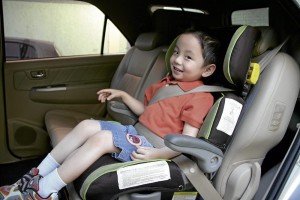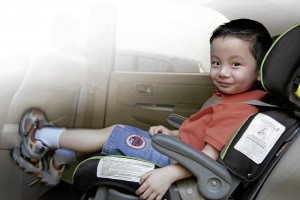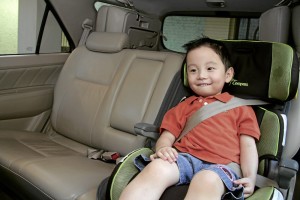Make sure that children are safer on every ride
As the mercury soars and the mountains and beaches beckon, many a family will find a road trip irresistible. This is also a good time to review just how safe you keep your children as you drive in the city and on highways. After all, they are your most precious cargo-and keeping them safe should be your top priority.
Always buckle up
Many drivers have a misconception that if they are just driving a short distance, seatbelts are not needed. The truth is that many accidents (close to 80 percent according to some insurance surveys) happen a short distance from one’s home or office. Even on small city streets, cars can reach 40 kph, and a crash at that speed can be fatal, especially if the occupants are not using their seatbelts. This rule particularly applies to children-and they need special seats to make proper use of seatbelts.
Kids sit in the back seat
How often do we see parents ferrying children on their laps in the front seat. They don’t realize that in a car crash, inertia will make it impossible to hold on to a child and there’s a good chance that the child will fly out through the windshield or be seriously injured by bumping into the dashboard. Children below 13 should always be buckled up in the back seat.
Article continues after this advertisementChoose a proper child seat
Article continues after this advertisementSitting in the back seat is safer, and using the seatbelts is a must. Children need special child seats-essentially adaptors to make the seatbelts effective and safe.
For kids below one year old, they should be in a rear-facing infant seat. Kids one to four years old may need a “convertible” seat that can face either rear or forward. It’s far safer to have children face the rear even up to the age of three, as long as they can fit in the seat. Then you can use the convertible seat in a front-facing position. Older children, four and up, once they outgrow a forward-facing seat, can use booster seats. These use the car’s regular seatbelts but position the belts properly; kids are also more comfortable and can see out better. Pick a seat that’s easy to install and move from one car to another. It’s worth noting that the best seat isn’t necessarily the most expensive.
Install the child seat properly

CHILD seats must be fixed as rigidly as possible, using either the car’s seatbelt or the seat’s own Latch or Isofix belts. PHOTOS BY JASON K. ANG
Child seats must be fixed as rigidly as possible, using either the car’s seatbelt or the seat’s own Latch or Isofix belts. Latch or Isofix systems, which have to be present on both the vehicle and the seat, make proper attachment easier. Make sure that the child can sit properly, with the lap belt across the upper thighs and not the stomach. The shoulder belt should be snug across the shoulders and chest, and not across the neck or face. It’s best to read the seat’s manual and be familiar with how the seat installs in each of your vehicles.
Choose a safer car
Before you count your horsepower and cupholders, make sure your car has the most comprehensive safety features in its class. Features that can enhance safety include: ABS brakes, stability control, airbags and the most basic-five-point seat belts for all passengers (something sadly not even standard these days). Read about crash tests for each model in your shortlist, and lean toward the ones with a 5-star or “Top Safety Pick” rating. The US National Highway Traffic Safety Administration (www.nhtsa.gov), Insurance Institute for Highway Safety (www.iihs.org), and Euro NCAP (www.euroncap.com) are good places to start. Take note that the crash test results only apply to vehicles with the same safety features as the foreign model-same number of airbags, for example.
Learn how to drive
Moving your car forward is one thing, but learning the essentials of safe driving is another. Particularly important are practical experiences in what to do during an emergency. So that when your car suddenly starts skidding in the rain, you know just what to do. Schools like Tuason Racing and companies like Ford Motor offer courses in driving safety.

